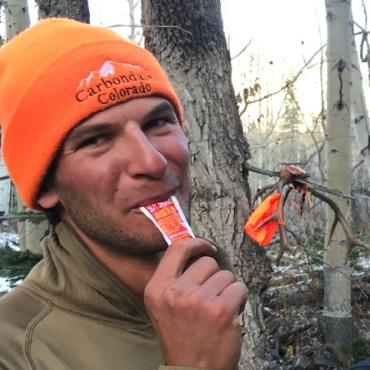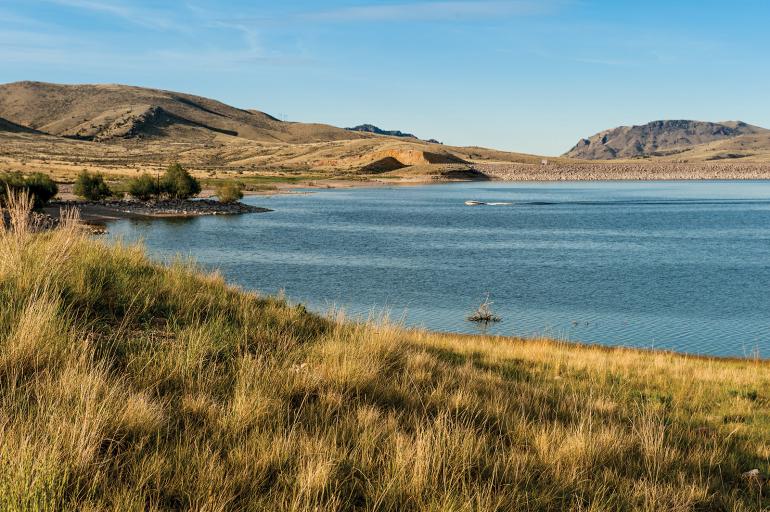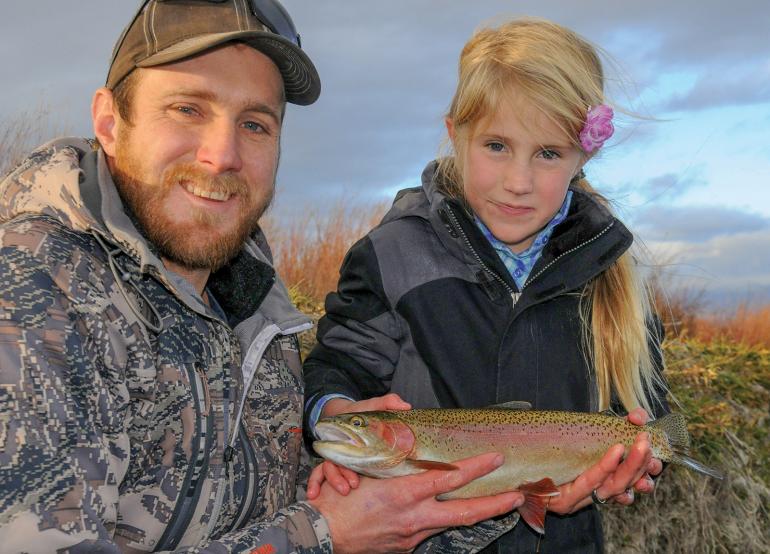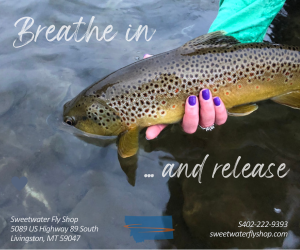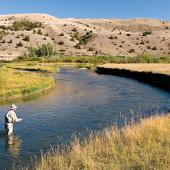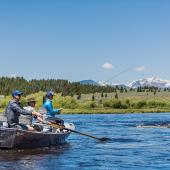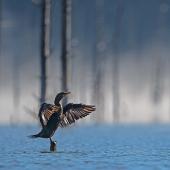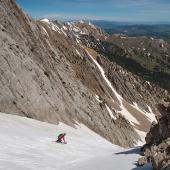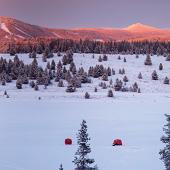Feelin' Low
The oft-overlooked side of Montana fishing.
Rivers might be the pride and joy of southwest Montana, but local ponds and reservoirs are equally worthy of attention. After all, most state-record fish come from lakes, not rivers. When it comes to selecting a lake, there are dozens of options within day-trip distance of town, but a handful stand out as particularly special. The following are time-proven gems, although it pays to look at a map and plan your own trip with whatever goals and objectives you have in mind.
Hebgen Lake
Located just outside of West Yellowstone, Hebgen is a trout angler’s paradise. Ask 100 anglers what the best time of year to fish the lake is, and 90 of them will say “ice-out.” That means the first few days and weeks after the ice retreats from the shoreline. The fish are in shallow water, cruising for insects that first become active near the shorelines, which heat up and produce insects before the rest of the lake. The most effective tactic is to cruise the shoreline in a boat or float tube, casting and stripping a small nymph like a beadhead pheasant tail, or running two midges under an indicator. Look for the dimples of feeding trout on the surface to guide your day. Oftentimes, the best success comes in small coves or nooks that are protected from the wind. By mid-June, the fish move offshore, and become more difficult to catch. Bottom line: if you’re going to fish Hebgen, hit it first thing in the spring.
Canyon Ferry, Hauser & Holter Reservoirs
These Missouri River reservoirs are chiefly known for their walleye, and tactics are similar on all three. If bound to the bank, concentrate your efforts in late April through early May when walleye move into shallow, rocky areas to spawn. Chuck Mister Twisters or Rapala X-Raps from a rip-rap shoreline at last light. Retrieve them painfully slow. A few cranks, pause a few seconds, a couple more cranks, pause, repeat. Water temperatures will be in the low 50s this time of year, and the fish will not exert much effort for a meal. If you have a boat, though, the fishing season extends well into summer once the water warms up and the walleye dive deep. Try trolling crankbaits and pitching scented plastic jigs around submerged structure.
Part of the allure of walleye fishing is how predictable they are. Once you find a hot bite, take careful note of the conditions—water temperature especially. Then, in subsequent years, when those same conditions line up, you can almost expect to have a killer day on the water.
Clark Canyon Reservoir
While not known for its trout densities, this reservoir near Dillon kicks out some of the biggest browns in the state. But recently, it has also become a destination for carp anglers from all over the map. The south end of the reservoir is a huge mud flat, and on sunny days, sight casting from a canoe to carp finning in the muck is about as close to the saltwater-flats-fishing experience as you can get here in Montana. If you don’t have a boat, kick off your shoes—you’d lose ’em in the mud, anyway—and peruse the shoreline looking for bubbles or muddy spots that give away feeding carp.
Bozeman Town Ponds
These local puddles might not seem like much, but they can kick out some surprisingly large fish, especially largemouth bass. Bozeman Pond, behind the Gallatin Valley Mall is a classic after-work stop. But be warned, the bluegills and bass in here receive a shocking amount of pressure and can be quite wary. Glen Lake (aka, the E. Gallatin Pond), located behind MAP Brewing, is stocked with catchable-sized rainbows—and if you can’t seem to hook one of these slimy suckers, at least you can catch a buzz at the brewery. The two ponds at Gallatin County Regional Park can also have exciting action, but are often overrun with dogs. If fishing here, do yourself a favor and go at off-hours when the likelihood of hooking a bluegill is higher than that of sinking a barb into someone’s furry friend. And finally, at all local ponds, obey the signage. “No Fishing” means you cannot fish there. Seems pretty clear, no?
A steelhead fisherman at heart, Cast managing editor Eli Fournier bides his time chasing their smaller counterparts in Montana.


